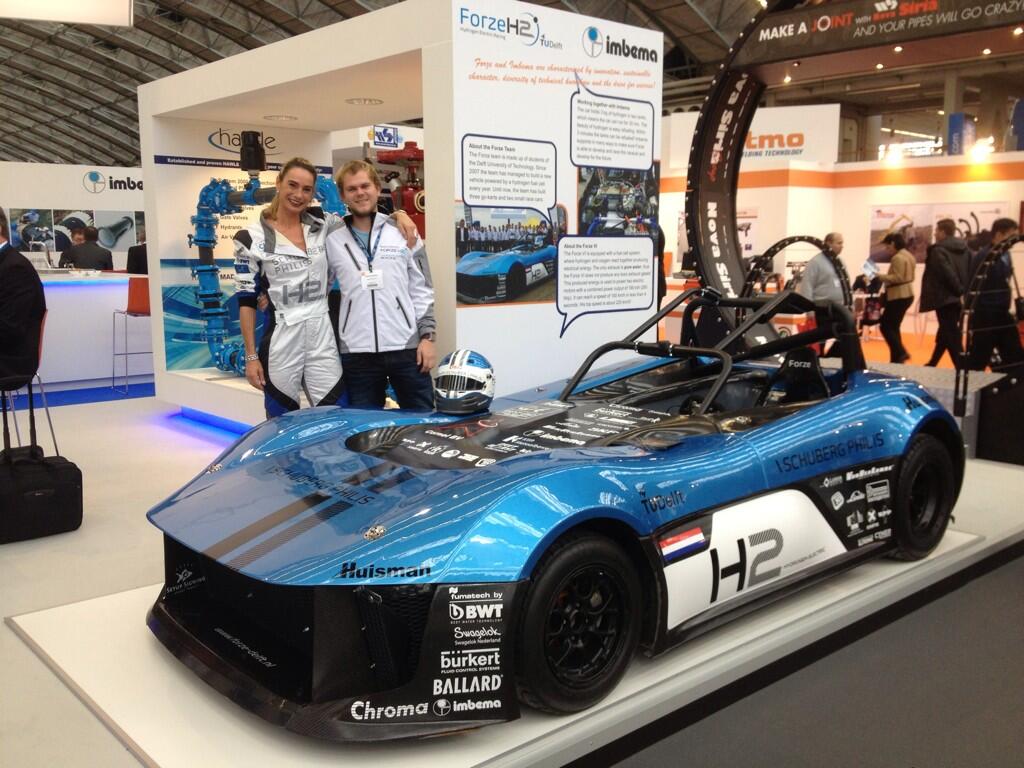The Forze VI is (the 6th vehicle created by FORZE, but first of its kind to be closed wheel) set to compete against gasoline powered opponents in the Catherham Cup. The goal is to set a lap record for hydrogen fuel cell cars at the Nurburgring Nordschleife.
Based on the Lotus 7 chassis, the VI utilizes a push rod with carbon links suspension and weighs roughly 860 kg's. It's powered by a combination of electric motors rated at 100kW (135 hp) with a boost power of 190kW (258 hp). Top speed is 210 km/h. It's fuel cell system is a Ballard FC Velocity MK1100 stack with Forze balance of plant hardware & software. The drivetrain is created using Planetary Gears (ratio 1:3:66).
 |
| Complete 100 kW fuel cell system developed by Forze. |
How to create electric energy
"In the race cars of Forze a PEM fuel cell is used. In the fuel cell stack, many cells are combined to create an efficient system. The cells are stacked upon each other. Fuel cells come in many varieties; however, they all work in the same general manner. They are made up of three adjacent segments: the anode, the electrolyte, and the cathode. Two chemical reactions occur at the interfaces of the three different segments. The net result of the two reactions is that fuel is consumed, water and/or carbon dioxide is created, and an electric current is created, which can be used to power electrical devices, normally referred to as the load.
In the Forze racecars PEM fuel cells are used (Proton Exchange Membrane).
On the anode side, hydrogen diffuses to the anode catalyst where it later dissociates into protons and electrons. These protons often react with oxidants causing them to become what is commonly referred to as multi-facilitated proton membranes. The protons are conducted through the membrane to the cathode, but the electrons are forced to travel in an external circuit (supplying power) because the membrane is electrically insulating. On the cathode catalyst, oxygen molecules react with the electrons (which have traveled through the external circuit) and protons to form water in this example, the only waste product, either liquid or vapor. A schematic image shows the working principle of a cell."
I will be sure to follow up on this seeing as how they are technically an FSAE team. However, going from open wheel to closed wheel is a daunting task, even for 70 members. A new competition based on this chassis would be amazing!





No comments:
Post a Comment